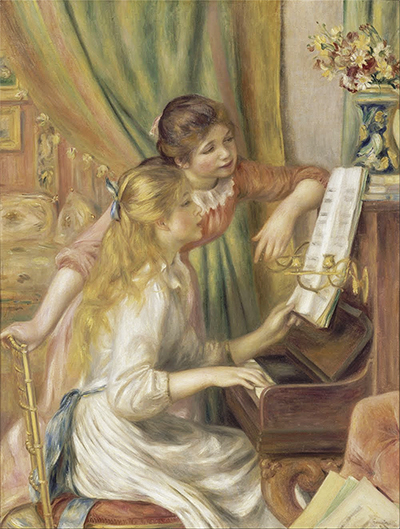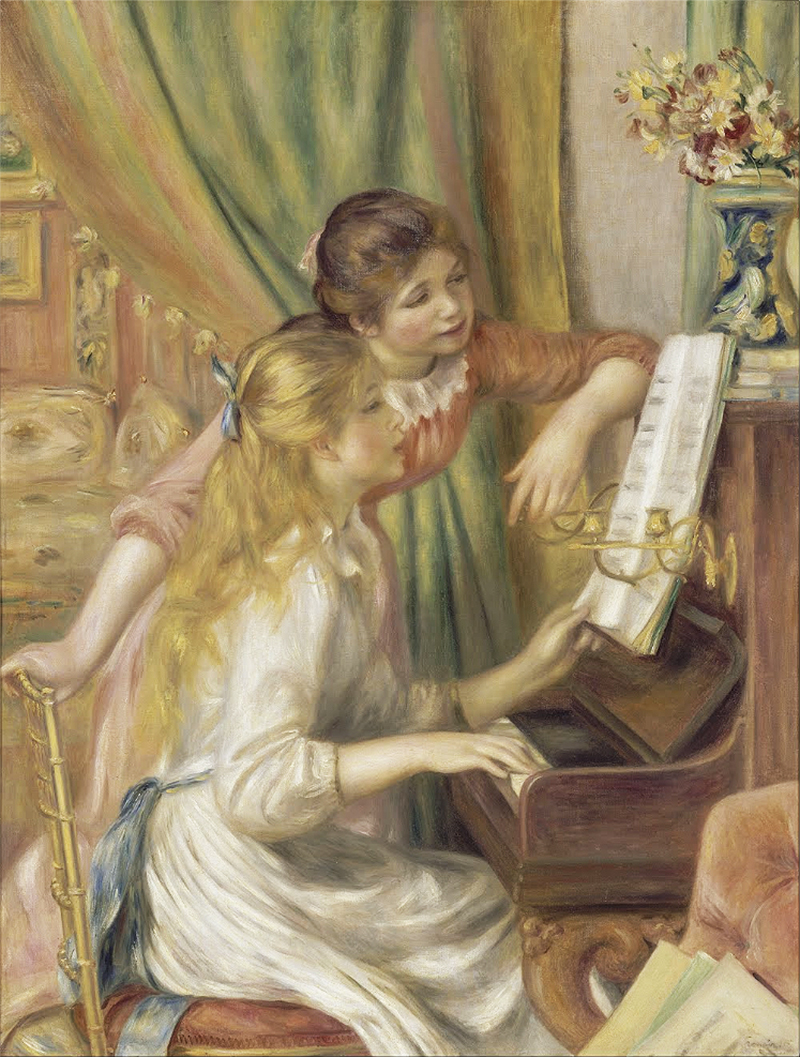By the time that Renoir produced Girls at the Piano in 1892, he had long since turned his back on the Impressionists and was making use of a more traditional style of painting. This new direction would prove controversial.
Here we find a distinctly classical artwork, both in content and style. One can imagine conservative families being drawn to these types of paintings, thanks to their wholesome influence. Many felt that Renoir had settled for simplicity through laziness during this later part of his career. Some were confused as how an integral member of a groundbreaking collection of artists could choose to take this path. Others appreciated the hundreds of paintings, such as Girls at the Piano, that appeared over several decades. Renoir was to prove a controversial artist in this regard, perhaps more so than any other member of the Impressionist movement. In fact, even today there are still two very contrasting schools of thought on this period, as well as his career as a whole. Some have even asked for his entire oeuvre to be removed from display in the United States, though these requests tend to arrive from childish elements on a small number of social media platforms.
In this scene we find two sisters practicing music together during a relaxed moment of leisure time. Perhaps the girl sat down is the younger sister and seeking advice from her sibling. They appear to be reading the notes together before working out how to construct the particular song. They are dressed elegantly, suggesting a comfortable, middle class family who are able to offer these types of hobbies to their offspring. The remaining elements of the composition are there to reinforce this domestic setting, with flowers in a pretty vase sat besides several books. A number of curtains are placed deliberately in order to section up the artwork, and in the nearest foreground is a small couch on which some documents or a newspaper have been placed. In the background we find a loosely delivered wall with a number of small paintings hanging upon it.
This artwork was originally placed in the Musée du Luxembourg after being commissioned by the French State. They had decided to begin the process of better representing the work of the French Impressionists within their collections and this was the first of Renoir's to be added. The artist prepared well for this piece, with several drawings and study paintings have been uncovered in recent years. He perhaps felt a pressure on this artwork because of who had commissioned it, and so made several attempts at it before handing over the finished work. There has been some discussion as to whether the influence of Fragonard can be found in elements of this painting. It may also be that the artist's style in his later years was more suitable for the tastes of French curators than his genuine contributions to the Impressionist movement.
The original artwork, Girls at the Piano, is normally on display at the Musée d'Orsay, Paris, as part of their extensive Renoir collection. This highly significant art institution is amongst the most visited art venues in the world and serves as an exceptional support to the Louvre, with both venues to be found in this historic and breaktaking French city. The d'Orsay holds an impressive variety of work but some of their most famous items that are loosely related to the work of Renoir and other members of the Impressionist movement include the likes of Luncheon on the Grass by Edouard Manet, In a Café by Edgar Degas and The Gleaners by Jean-Francois Millet. In truth, there are few better collections of French art in the world and the institution remains a must-see for any art follower that finds themself in the French capital.





